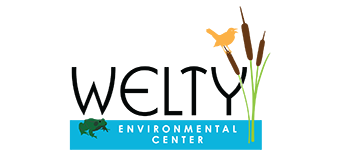A Tale of Two Prairies–Progress at Big Hill Park
Even without the goats to help this summer, we have made great progress on shifting the Big Hill Center-adjacent property from Old Field to Oak Savanna/Prairie this past year. The hard work, supervised by the Rock County Conservationists and supported by DuPont’s Clear Into the Future grant, is paying off. The landscape is opening up, natives are taking hold, the soil is being nourished, and it is a wonder to behold. In fact, behold it in the two photos below: the left photo taken a day before the goats arrived last summer; the right photo was taken on Wednesday afternoon.
What was here when we started
Until it was purchased by the City of Beloit in 1993, the section of Big Hill Park where Welty is located, was used for agriculture. These 90 acres can be described with the ecologist’s casual term “Old Field”. This implies a mix of flowers and grasses that colonize tilled fields once they are retired from agriculture, with a large percentage of non-native plants. As the years go by, most fallow land in southern Wisconsin will gradually succeed to some kind of tree growth. This is the condition of the Big Hill Prairie. It appears about 20 years fallow, with tree and brush canopies occupying about 10-20% of the total area. (Left: July 6, 2019; Right: June 10, 2020)

The goal is to create an ecosystem that helps mitigate climate change…
Restoration efforts took off in 2019
Last summer, Welty was awarded a CITF grant from DuPont, to help accelerate the restoration progress and create an ecosystem that helped mitigate climate change by: creating habitat that supports many species of native insects, animals, and plants–especially those that are slow to adapt to the changing climate; bringing back a self-sustaining ecosystem that will only require annual burning and minor brush and weed cutting instead of gasoline-powered tools to maintain its character; creating an extensive root systems of native prairie plants that secure the dirt and trap rainfall to prevent water and soil runoff. This grant also supports education efforts, to help teach the public the value of preserving and restoring native parcels.
…and teaches the value of preserving and restoring native parcels.
Other Center-adjacent spaces (~six acres) were the location of partner workdays supervised by RCC, including United Way’s Day of Caring teams and Fresh Start students (a GED program for young adults led by Community Action, Inc.). Again, vines, bushes, and invasive tree species were chopped down, with much of the woody debris left in situ to decompose and improve the soil microbiology. A row of burr oak seedlings have been planted to eventually provide shady areas in the prairie. This section would also benefit from a controlled burn in the fall, to prepare for early-winter seeding.
We hope to have work days in the not-too distance future
We’re still trying to figure out how to conduct volunteer work days safely, so keep an eye out for any times we might be able to schedule. Even if you can’t come out to work this summer, feel free to stop by for a walk around the Center and see the difference between the 10 acres we’ve worked on, and the 80 acres that are still Old Field. A big thank you to Rock County Conservationists for their know-how and labor, and to DuPont for helping support the project financially.
 Brenda Plakans
Brenda Plakans
Executive Director, WEC
info@weltycenter.org
608-361-1377





